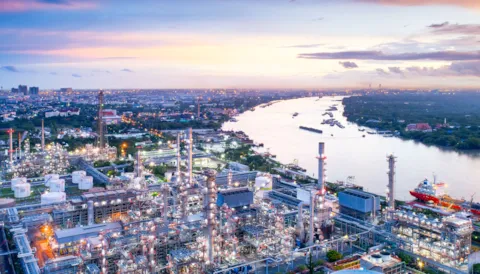Chemical transportation safety and risk analysis software - Safeti Chemical Transport Risk Analysis
Safeti Chemical Transport Risk Analysis software provides a holistic picture of risk using quantitative risk analysis and allowing ready identification of high-risk areas
Transporting hazardous chemicals
Transporting hazardous chemicals poses a number of risks. Where are the greatest risks? Some chemical transportation safety risk issues are:
- Material with significant hazard potential being transported, i.e. flammable or toxic
- Large volumes involved
- Chemical transportation might involve populated areas, potentially exposing people to undue risk in the event of an incident
- The routes involved are often in uncontrolled environments and open to external threats (e.g. third party accidents) that can lead to a loss of containment
Consequently, it is important to evaluate various options for transporting hazardous chemicals – rail versus road versus pipeline – to find the optimum with regards to various competing ends such as safety, economics, operability, etc. Examples of chemical transportation risk include:
- Identifying optimum transport route for hazardous chemicals – e.g. primary versus secondary routes
- Avoiding densely populated areas
- Identifying areas along a route that need specific mitigation, e.g. increased pipeline thickness or speed restrictions
Chemical transportation safety analysis software
Safeti offers a total solution for chemical transport risk analysis, particularly in the context of quantitative risk analysis (QRA). Safeti software's extensive capabilities for chemical transport risk analysis include:
- Various modes of chemical transport including truck, rail, barge, pipeline, etc.
- Multiple routes and release types of hazardous chemicals (leak, ruptures etc.) can be defined
- Releases automatically assessed at predefined locations along the route or at evenly spaced distances, e.g. every 10 m
- Other factors that vary along the route (population density, weather, etc.) can also be defined and taken into account in the chemical transportation safety model
Safeti - supporting chemical transportation risk mitigation
Safeti also includes a dedicated model for assessing the chemical transport risks associated with pipelines, which is particularly useful when doing a quantitative risk assessment of a pipeline. The model takes into account the effect of the variation in process conditions when determining release scenarios of hazardous materials and also accounts for mitigation systems such as isolation valves and detection systems.








